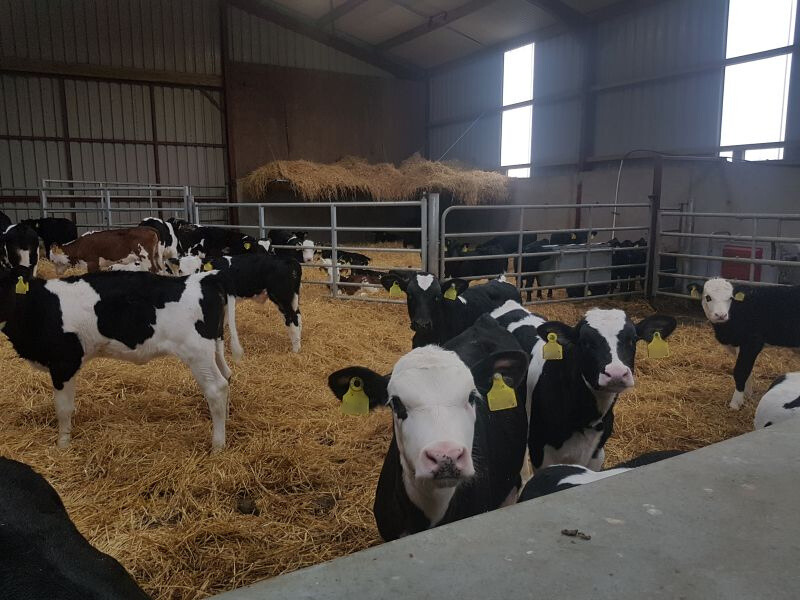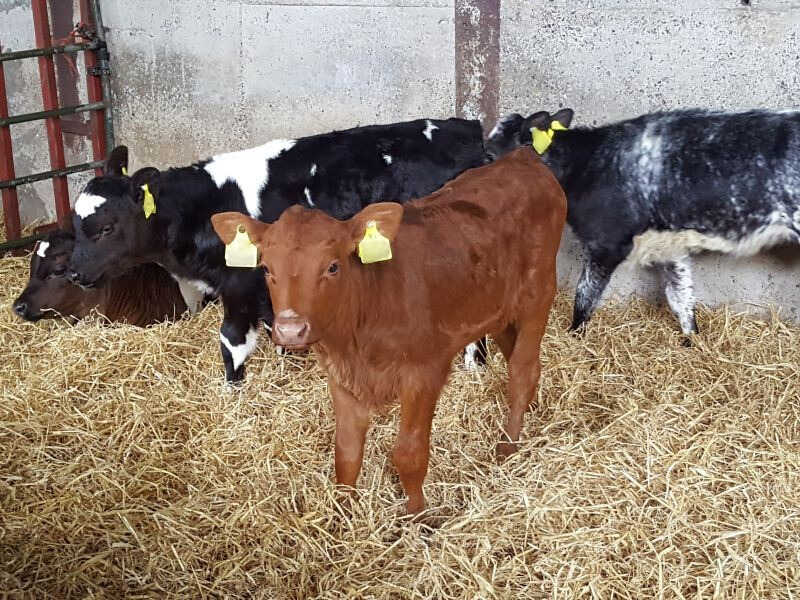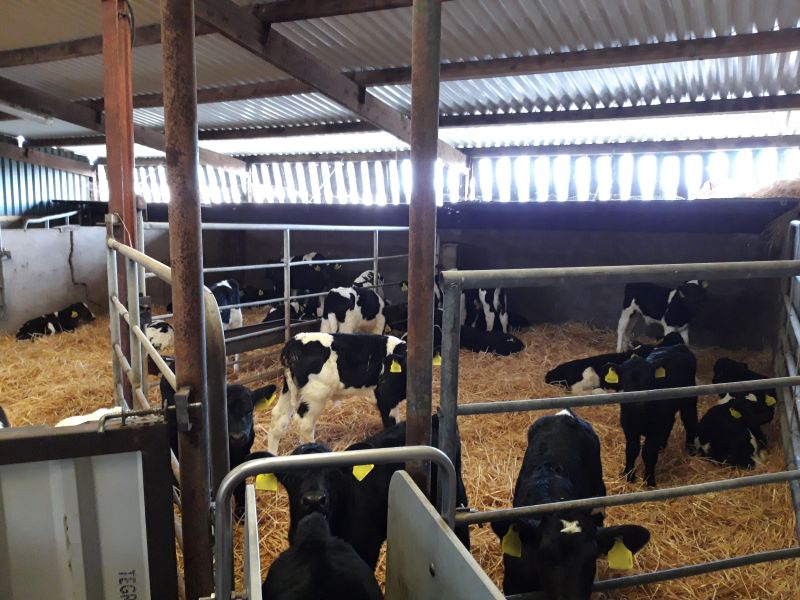Why Transition milk replacer is a permanent fixture in dairy farm’s calf nutrition
A County Tyrone dairy farm has cut calf mortality to just 1% and eliminated post-weaning growth checks by adopting strict rearing protocols – including incorporating transition milk replacer and once-a-day feeding.
Proven success on the McIlwaine farm
Father and son, Kenny and Kyle McIlwaine, run a crossbred dairy herd of Fleckvieh x Holsteins and Montbeliard x Holsteins near Newtownstewart. Their cows produce milk at an annual average yield of 9,000 litres/cow from twice a day milking.
Calving gets underway at the beginning of September with the last of the herd calving in March, with calf birthweights of 40kg or heavier. In the 2023/24 calving season, 160 cows produced 170 calves. This included several sets of twins and even a set of quadruplets. Around 60 replacement heifers are retained annually, while bull calves are sold at approximately a month of age.
Protecting calves from day 1
Calf health starts before birth. Cows are vaccinated at drying off against rotavirus, coronavirus, and E. coli – the main scour-causing pathogens. This protects their calves at their most vulnerable, in the first few weeks of life.
“Administering the vaccine about eight weeks before calving gives cows time to mount an immune response to the vaccine. This allows the cow to pass these antibodies on in her colostrum to protect the calf,” explains Dr Amanda Dunn of Bonanza Calf Nutrition.
At calving, each cow is milked immediately and her calf receives at least four litres of fresh colostrum, manually fed. “If they want to drink more, they will get it,” says Kenny. For the first five feeds, calves receive their dam’s colostrum, giving them the best possible start.
Although the antibodies in colostrum cannot pass into the bloodstream after 24 hours, colostrum contains a sea of other bioactive components. These play a gigantic role in the baby calf’s immune system development.
Nutrition for bull and heifer calves is identical. Providing 5-star treatment to all calves when it comes to colostrum and transition milk feeding is a great way to reduce risk of disease spread, especially if both groups are reared on the same farm as calf scours etc are extremely transmissible, says Amanda.
Transition milk replacer: bridging the gap
After colostrum, calves move onto Transformula, a transition milk replacer manufactured by Bonanza Calf Nutrition. It is fed for the first three weeks – the period of highest scour risk – at 3.5 litres twice daily (140g/litre), to replicate cow transition milk.
Amanda advises that transition milk feeding is a very important source of nutrition, providing bioactive ingredients which have an important role to play in the maturation of a calf’s gastrointestinal tract.
Our recent trial work has highlighted the benefits of feeding a transition milk replacer (Transformula) versus a standard milk replacer for 21 days. Results showed Transformula fed calves grew significantly better and had zero cases of scour compared to over 25% of calves that received the standard MR.
“I wouldn’t not feed Transformula,’’ says Kenny. “From a calf health perspective the results since feeding it have been second to none with no bother with calf scours or respiratory issues. Last season we only lost two calves out of the batch – a 1% mortality rate.’’
Why it works
Feeding sufficient colostrum within the first couple of hours of birth and continued feeding of colostrum and transition milk replacer up to three weeks of age is a “recipe for success’’ for calf health, says Amanda.
For Kenny and Kyle, a combination of excellent colostrum management, attention to detail and providing the best ingredients found in transition milk is doing the trick. The ingredients in the transition milk aid gut development and stimulate the immune system in the early weeks, when the calf’s own immune system is kicking in. This has allowed them to rear healthy animals and meet their target age at first calving of 24 months.
Practical advantages
It will not always be feasible to feed cows own transition milk for three weeks. Transformula gives the opportunity to extend feeding for longer and eradicate risk of transferring milk-borne diseases from cow to calf, e.g. Johne’s and Mycoplasma. It is the first transition milk replacer on the market and is the perfect alternative to help calves gain more weight, promote gut maturation and fight scour causing pathogens.


